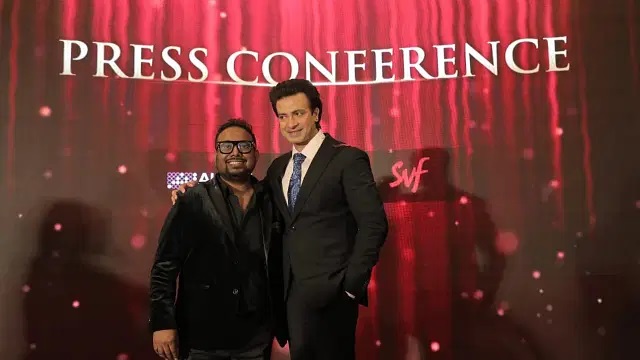Written by: Muhammad Suhayb
Posted on: December 02, 2023 |  | 中文
| 中文
Shakib Khan and Mimi Chakraborty
It was just the difference of language, otherwise the recent Bangladeshi superhit film Toofan turned out to be a regular masala film. The action thriller directed by Raihan Rafi, tried to create a TOOFAN at the box office with an Urdu-dubbed version, but like most cyclones, failed its mark. The film’s narrative hinges on 'megastar' Shakib Khan’s dual roles as Toofan, a mafia boss whose rise mirrors classics like Mario Puzo's The Godfather. Shanto, the lookalike of Toofan, complicates the situation. It reminds one of 'Hero', Waheed Murad's last starring role from 1985 where Waheed plays a dual role: Fato, a struggling actor, and Jani, a skilled and elusive thief. The narrative centers around Fato's attempt to become a star, and the corrupt producer's plan to launch him as the infamous thief Jani.
In Toofan, Shanto, a struggling actor, is thrust into the gang by Toofan himself, but the plot gets lost here. For newcomers, Shakib Khan is often likened to legends Rajnikanth or Vijay for his stardom and surely delivers a strong performance. However, the movie suffers from a lack of originality and its inspiration from Bollywood hits like 'Don', 'Animal' and 'KGF' is apparent. After an initial hour, the shift moves from Shanto's role to that of Toofan, and the viewer gets stuck in the identity crisis. The history class of Toofan may have been useful for Shanto, but the viewers needed a break. Poor writing by Adnan Adib Khan made the viewer count each minute of the 2 hr 42 min on his clock and that is a lot of time when you are paying for it.

Shakib Khan poses for a photo with film director Raihan Rafi at an event where the film was announced on 11 December in 2023.
Set in the 1980s, 'Toofan' nostalgically recreates an era of black-and-white TVs, vintage cars, and an underworld ruled by a shadowy figure. The story follows Toofan’s journey from an unknown entity to an all-powerful mob boss controlling both the criminal underworld and government machinery. However, the inclusion of Shanto's subplot feels underdeveloped, with his screen time limited, rendering his character almost insignificant compared to the overwhelming focus on Toofan's dominance. It was supposed to be a fight between a crime boss and an honest police officer (Chanchal Chowdry); now where have I seen such a film? The cat and mouse chase ended up in the climax which was rather puzzling for the viewer. Supporting cast members, including Mimi Chakraborty and Masuma Rahman Nabila, try to add depth to the story, which lacked cohesion and originality. Characters are underdeveloped, especially Shanto’s character, which vanishes as the narrative progresses. Julie’s role (Nabila) is largely ornamental, while Suchona’s character (Mimi) lacks the punch needed for such a character.
Thanks to the days when there were no smartphones, otherwise Toofan's image would have been on wallpapers and everybody knew who he was. Despite the film’s shortcomings, it did succeed in showcasing the actor's range and charisma. His portrayal of both the ruthless Toofan and the dreamer Shanto underlines his status as a megastar in Bangladeshi cinema. However, for Pakistani audiences, the predictability of the plot and its overt Bollywood-esque execution dulled the impact. With many, read all, not familiar with Shakib Khan, the cinema shows went nearly empty.
Toofan, the mafia boss's origin story, resembled much of the Vito Corleone from The Godfather (1973), however, the vengeance rooted in childhood trauma, lacks direction. As a young boy, Toofan aka Galib witnesses his father’s murder at the hands of a local thug, and he kills him right away. Galib systematically eliminates rivals and bends politicians and governments to his will, becoming Toofan on the way. (Michael Corleone?). Despite his ruthlessness, the character remains a one-dimensional embodiment of power and brutality.
Toofan the movie impresses with its visual aesthetics and dynamic action sequences. The cinematography captures some striking visuals, effectively setting the mood and atmosphere, while the action choreography delivers adrenaline-pumping moments that keep the audience engaged. The one-take action shots show that the director means business, but nothing can make up for a lost plot and a narrative that is not easily understood.
Toofan shows how far the Bangladeshi industry has reached, after independence. With Pakistan cinema down in the dumps, where final episodes of dramas are needed to keep the engine running, it's about time for Pak-Bangladesh collaborations. Pakistan's industry was once glorious and held an upper hand over their East Pakistanis counterpart, but that was a different time, different people and a different century. Bangladesh was way behind Pakistan and looked towards us for advancement, it seems that with the exposure and outer help, they have developed themselves that could be beneficial for both industries. It's about time that films are used to bring peace to the region.
Its release in local cinemas was a misadventure; though originally released after Eid-ul-Azha in Bangladesh and later in the rest of the world, its availability on Over-the-Top (OTT) platforms by September, undermined its box office prospects in Pakistan. For those who have started watching South Indian films with ease on OTT platforms, releasing an already available film in the theatre could have only brought trouble.
You may also like: